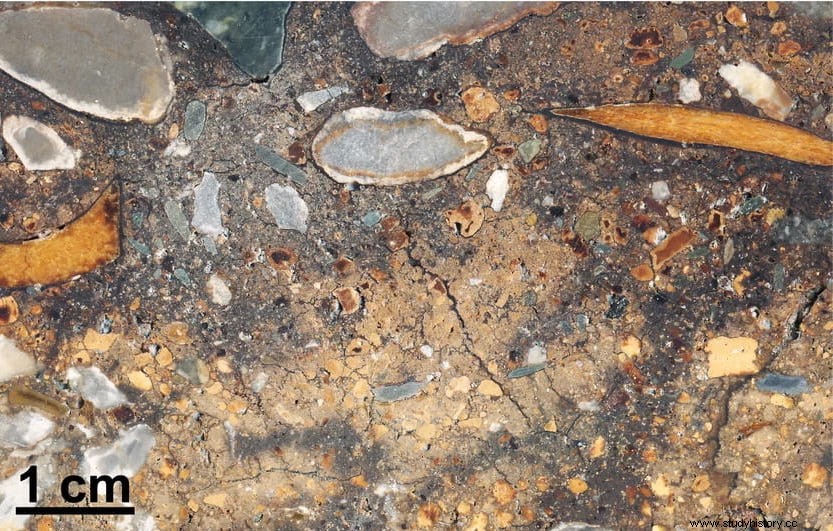Most archaeologists have long considered the sediments in which archaeological finds are embedded to be minor by-products of excavations. However, in recent years it has been shown that sediments may contain ancient biomolecules, including DNA.
Obtaining human and ancient faunal DNA from sediments offers exciting new opportunities to investigate the geographic and temporal distribution of ancient humans and other organisms at sites where their skeletal remains are scarce or absent , says Matthias Meyer, lead author of the study and researcher at the Max Planck Institute for Evolutionary Anthropology in Leipzig.
To investigate the origin of DNA in sediments, the Max Planck researchers teamed up with an international group of geoarchaeologists - archaeologists who apply geological techniques to reconstruct the formation of sediments and deposits - to study the conservation of DNA in sediments on a microscopic scale . They used undisturbed sediment blocks that had been previously extracted from archaeological sites and soaked in plastic-like synthetic resin (polyester). The hardened blocks were taken to the laboratory and cut into sections for microscopic imaging and genetic analysis.
The researchers managed to extract DNA from a collection of sediment blocks prepared 40 years ago, from deposits in Africa, Asia, Europe and North America. The fact that these building blocks are an excellent source of ancient DNA - including that from hominins - despite often having been stored for decades in plastic, provides access to a vast, untapped repository of genetic information . The study ushers in a new era of ancient DNA studies that will revisit samples stored in laboratories, allowing analysis of sites long since refilled, which is especially important given travel restrictions and the inaccessibility of deposits in a pandemic world says Mike Morley of Australia's Flinders University, who led some of the geoarchaeological analysis.

Using sediment blocks from Denisova Cave, a site in the Altai Mountains of south-central Siberia, where ancient DNA from Neanderthals, Denisovans and modern humans has been recovered, the scientists showed that small organic particles they produced more DNA than randomly sampled sediments. The study clearly shows that the high success rate in obtaining ancient mammalian DNA from Denisova Cave sediments is due to the abundance of micro-remains in the sediment matrix, rather than free extracellular DNA from faeces, body fluids, or decaying cellular tissue potentially adsorbed to mineral grains , says Vera Aldeias, co-author of the study and researcher at the University of Algarve (Portugal). This study is a big step towards understanding precisely where and under what conditions ancient DNA is preserved in sediments , says Morley.
The method described in the study enables highly localized microscale sampling of sediments for DNA analysis and demonstrates that ancient DNA (aDNA) is not evenly distributed in sediments, and that certain sediment characteristics are more conducive than others for the preservation of ancient DNA. Linking aDNA from sediments to the archaeological micro-context means we can also address the possibility of physical movement of aDNA between sedimentary deposits , says Susan Mentzer, a researcher at the Senckenberg Center for Human Evolution and the Paleoenvironment (Germany).
Diiendo Massilani, lead author of the study, was able to recover substantial amounts of Neanderthal DNA from just a few milligrams of sediment. He was able to identify the sex of the individuals who left their DNA and showed that they belonged to a population related to a Neanderthal whose genome was previously reconstructed from a bone fragment discovered in the cave. The Neanderthal DNA in these small plastic-embedded sediment samples was much more concentrated than we usually find in loose material , he affirms. With this approach it will be possible in the future to analyze the DNA of many different ancient human individuals from just a small cube of solidified sediment. It's amusing to think that this is presumably because they used the cave as a toilet tens of thousands of years ago .
